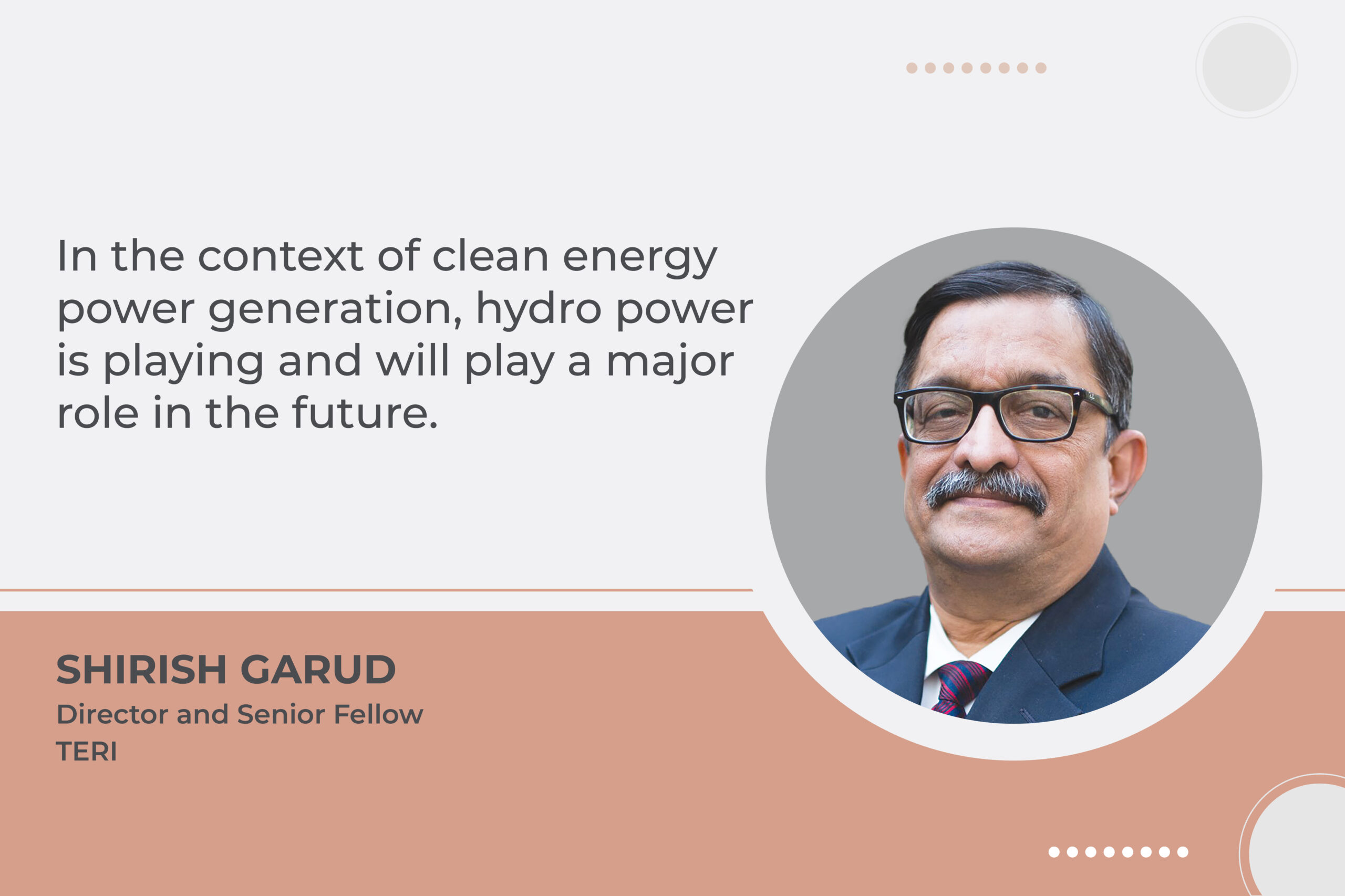Hydro power ensures grid stability with flexible generation capabilities
By Staff Report October 7, 2025 6:16 pm IST
By Staff Report October 7, 2025 6:16 pm IST

All hydro power projects are now considered renewable energy projects since they do not generate GHG emissions during operation.
Hydro power has been the backbone of India’s power generation since the early 1900s. The first hydroelectric power plant was established in 1897 and is still operational. Today, India’s installed capacity of large (>25MW capacity) hydro power plants is 50 GW.
Major segments of hydro power
Hydro power in India is categorised into major segments. Large hydro power projects that have a capacity above 25 MW. These are typically hydro power projects with dams to store water and are generally multipurpose plants designed with irrigation, flood control, and power generation capabilities.
Small hydro power projects have a capacity of less than 25 MW. These projects are characterised by their design, which is often named as run of the river, which means the river flow is partially or completely diverted through hydro power plants, and after power generation, the water flow is routed to the original river flow.
All hydro power projects are now considered renewable energy projects since they do not generate GHG emissions during operation. Hydro power projects are key to India’s green energy objective of developing 500 GW of clean power by 2030. As per the reassessment study carried out by CEA during the period 2017-2023, the exploitable large hydro potential in the country is 1,33,410 MW. Further, the identified pumped storage potential is 1,76,280 MW.
Hydro power projects offer the benefits of quick ramping up and ramping down capabilities, as well as round-the-clock power generation (subject to water availability and an effective water management strategy). These capabilities have often been utilised for grid management in states such as Kerala and Karnataka.
In the context of clean energy power generation, hydro power is playing and will play a major role in the future.
Pumped hydro power storage
Another category of hydro power plants is pumped hydro power storage power plants, which typically have two reservoirs, one at a lower elevation than the other, and these are interconnected with a hydro turbine generator cum pump motor assembly. India has a potential of about 176.28 GW of pump hydro storage capacity. Pump hydro storage, as its name suggests, is a form of power storage that utilises the potential energy of water. During the availability of excess renewable power, the water from the lower elevation storage dam is pumped to a higher elevation storage dam and stored there. During periods of high grid power demand, especially during peak times, water from a higher elevation reservoir is released through a hydroelectric turbine generator assembly to a lower elevation reservoir, generating electricity.
These hydro power storage systems are crucial for grid management, particularly as the share of variable renewable energy generation from wind and solar sources increases. Currently, about 12-13 percent of electricity generated is coming from the renewable sector, and the grid management is slowly becoming a critical issue.
Artificial intelligence and hydro powerArtificial Intelligence is slowly going to play an important role in hydro power plants to address the following key aspects.
Water management, especially during heavy monsoon rains and during drought conditions.
Preventive maintenance of the hydro power plants by monitoring various parameters and real-time analysis of them. This will be useful in avoiding catastrophic failures of key components like bearings, shafts, or blades of turbines.
Optimum power generation management using advanced algorithms for load management.
Risk analysis and emergency preparedness: One study estimated that the use of AI in the energy sector could be worth up to USD 13 billion. The capability of AI to handle large datasets on historical weather patterns, such as rainfall and snowmelt, would be useful for large-scale data analytics.
Although hydroelectric power is one of the most promising renewable resources, developing hydroelectric power projects is a lengthy, time-consuming process with substantial capital investments. Hence, accurate estimation of potential in terms of annual discharge and head available, along with site-related issues like erosion, sedimentation, risk from natural calamities, especially in the context of climate change and incidences of sudden rainfall and flash floods, is important. Artificial Intelligence can be utilised for analytics, site selection, potential assessment, and Operation and Maintenance, etc.
******************************
Authored by:
Shirish Garud, Director and Senior Fellow- TERI
We use cookies to personalize your experience. By continuing to visit this website you agree to our Terms & Conditions, Privacy Policy and Cookie Policy.